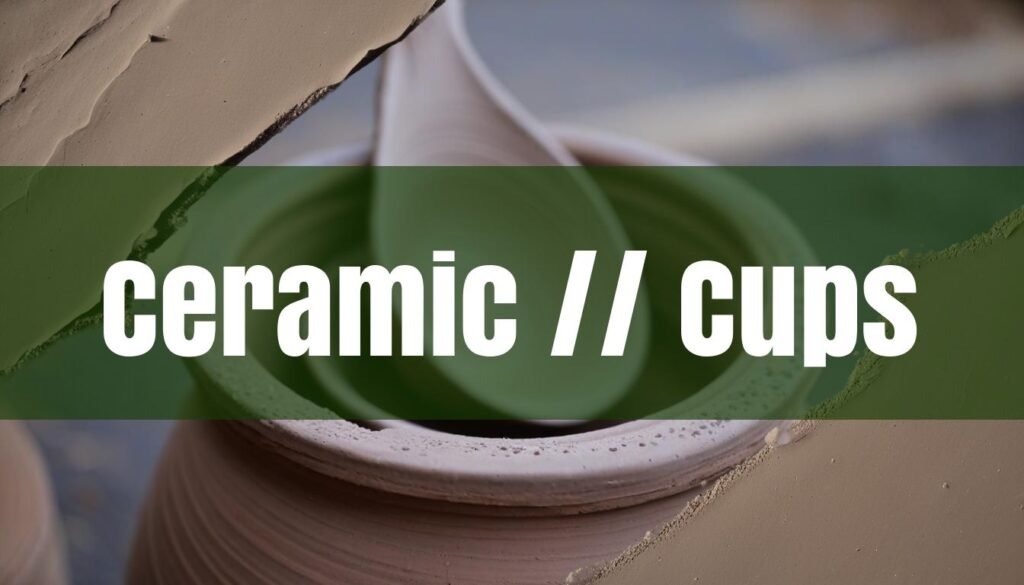Creating ceramic cups at home is a rewarding journey that allows for personalized expression and functional art. Even without a pottery wheel, beginners can craft unique and charming cups using hand-building techniques. This guide will walk you through the essential steps, from selecting the right clay to firing and glazing your creations, ensuring a comprehensive and accessible introduction to the world of ceramic cup making within the comfort of your own home.
The first step in making ceramic cups at home involves gathering the necessary tools and materials. Clay is the most essential material, and for beginners, stoneware clay is highly recommended due to its versatility and ease of use. Stoneware clay is durable, strong, and non-porous once fired, making it suitable for holding liquids without glazing. Other types of clay include earthenware, which is more porous and requires glazing to hold liquids, and porcelain, which is delicate and more challenging to work with. For more information, see this article on clay types.
In addition to clay, you’ll need basic tools such as a sponge, a bucket of water, a fettling knife or needle tool for cutting and scoring, a wooden rib for smoothing, and a wire cutter for removing your finished cups from the work surface. A banding wheel can also be helpful for rotating your work as you shape it.
Hand-Building Techniques
There are several hand-building techniques that are perfect for crafting ceramic cups at home, even without a pottery wheel. Two of the most accessible methods are the pinch pot method and coil building. The pinch pot method involves starting with a ball of clay and using your thumb to create an indentation, gradually pinching and rotating the clay to form a small bowl shape. This method is excellent for creating small, simple cups and allows you to get a feel for the clay.
Coil building, on the other hand, involves rolling out long, snake-like coils of clay and layering them on top of each other to build the walls of the cup. Score and slip the coils together to ensure a strong bond, and then smooth the interior and exterior of the cup with a rib or your fingers. This technique is ideal for creating larger or more complex cup shapes.
Once you’ve formed your cup, it’s crucial to dry it slowly and evenly to prevent cracking. Cover the cup loosely with plastic wrap for the first few days to allow the moisture to evaporate gradually. As the clay dries, it transitions from being workable to a “leather-hard” state, which is ideal for adding details like handles or decorative elements. Handles can be created by rolling out a coil of clay and attaching it to the side of the cup using the score and slip method. Once the cup is bone dry, it’s ready for its first firing, known as bisque firing. For more information on hand-building techniques, see this article: Pinch Coil Slab: Mastering Hand Building Pottery.
Firing and Glazing
Firing is a critical step in transforming your clay cup into a durable ceramic piece. Bisque firing is the initial firing that hardens the clay and makes it ready for glazing. This process involves heating the clay in a kiln to a specific temperature, typically around Cone 06 to Cone 04 (approximately 1800-2000°F). Since most home potters don’t have their own kiln, you can explore options such as using a local pottery studio, community center, or ceramic supply store that offers firing services.
The bisque firing process needs to be done under a very controlled heat, as the clay is put in a kiln and heated slowly and then also cooled slowly. The best program for the kiln to work is a Cone 06, 05, or 04 at a slow speed. Once bisque fired, your cup is ready for glazing, which adds color, texture, and a waterproof finish.
There are various glazing techniques, including brushing, dipping, and pouring. Brushing is ideal for detailed designs, while dipping and pouring are better for achieving an even coat over the entire cup. Apply two to three coats of glaze, allowing each coat to dry before applying the next. Before the glaze firing, make sure to wipe off any glaze from the bottom of your cup to prevent it from sticking to the kiln shelf.
Glaze firing typically occurs at a higher temperature than bisque firing, depending on the type of glaze used. Low-fire glazes are fired at around 1845°F, mid-fire glazes at 2192°F, and high-fire glazes at 2305°F. After the glaze firing, allow the kiln to cool completely before opening it to avoid thermal shock.





